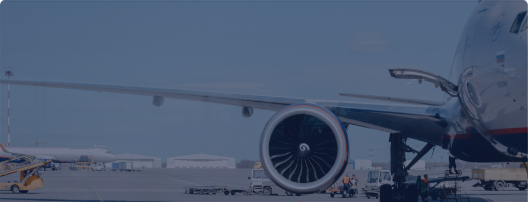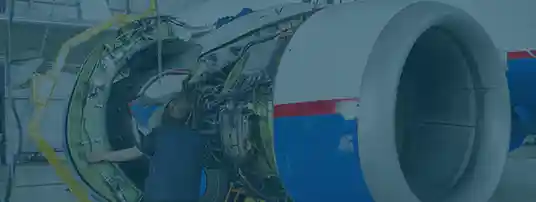Posted on August 12, 2020 linda strong aviation
With the debut and advancements of the instrument landing system (ILS), aviation navigation was revolutionized. With such guidance, aircraft are able to utilize instrument-based techniques to safely guide aircraft of all types through the approach and landing procedures, ensuring a secure and cautious touchdown during even some of the most challenging environmental conditions. In this blog, we will discuss how aircraft utilize radio technology, glide slope indicators, and other instrument approach system methods to safely perform instrument landings.
In general, an instrument landing system is an aid that allows for a precise runway approach, utilizing radio beams that supply pilots with vertical and horizontal guidance to approach a landing safely. To utilize such a system, an instrument approach procedure chart is published to allow for pilots to be aware of what information is needed to conduct such an approach while following instrument flight rules (IFR). These charts supply critical information such as what radio frequencies should be used for ILS components, minimum visibility requirements, and more. To further ensure safety, radio-navigation aids need to meet a specific accuracy as dictated by international standards and flight inspections are periodically conducted to confirm parameters and precision. Whether an instrument landing system approach is conducted manually or through autopilot, the ILS will always utilize a localizer for lateral guidance and a glide slope for vertical guidance.
An instrument landing system localizer is an antenna array that is typically placed past the departure end of the aircraft runway, and they consist of multiple pairs of directional antennas. To function, the localizer operates through a cooperation between runway transmission and receiving cockpit instruments. From the antennas, two signals at 90 Hz and 150 Hz respectively are transmitted one of 40 ILS channels, and the navigation ratio tunes in the frequency. With these signals, the aircraft can adjust its direction to sync with the runway, establishing an optimal lateral position for a safe landing.
The glide slope, also known as the instrument landing system glide path, permits the pilot to establish vertical guidance to achieve an optimal path of descent. Similar to the localizer, glide slope signals are transmitted on a carrier signal that is arranged to have a center that is 3 degrees above ground level. With cockpit instruments, the pilot can govern the direction of the aircraft to keep the glide slope indicator centered on a display, following the glide path to remain away from obstructions and properly touchdown at a specific point.
To successfully carry out an instrument landing system approach, qualified pilots with qualified aircraft must follow defined categories based on visual reference and other categories. A Category II ILS approach is when a decision height (DH) may not be lower than 100 feet, and the runway visual range (RVR) is not less than 300 meters. Category IIIA is when a DH may be below 100 feet and the RVR is over 200 meters. Category IIIB permits a DH of less than 50 feet and an RVR over 50 meters. Lastly, a Category IIIC is when a full-auto land and roll out guidance is utilized, forgoing DH and RVR limitation. Despite this category existing, it is rarely used due to problems with ground maneuvering upon landing.
When it comes time to begin sourcing the Instrument landing system parts and components that you need for your operations, Aviation Sourcing Solutions has you covered with everything you are searching for. Aviation Sourcing Solutions is owned and operated by ASAP Semiconductor, and we can help you find the aviation, NSN, and electronic parts that you are searching for, new or obsolete. As a premier supplier of parts for the aerospace, civil aviation, and defense industries, we're always available and ready to help you find all the parts and equipment you need, 24/7x365. ASAP Semiconductor is an FAA AC 00-56B accredited and ISO 9001:2015 certified enterprise. For a quick and competitive quote, email us at sales@aviationsourcingsolutions.com or call us at +1-714-705-4780.

 The only independent
The only independent



“We Proudly Support Intrepid Fallen Heroes Fund that serves United States Military Personal experiencing the Invisible Wounds of War : Traumatic Brain Injury (TBI) and Post Traumatic Stress (PTS). Please visit website (www.fallenheroesfund.org) and help in their valiant effort”.
We Hope that You Will Visit Us Again the Next Time You Need Aircraft Parts and Make Us Your Strategic Purchasing Partner.
Request for Quote